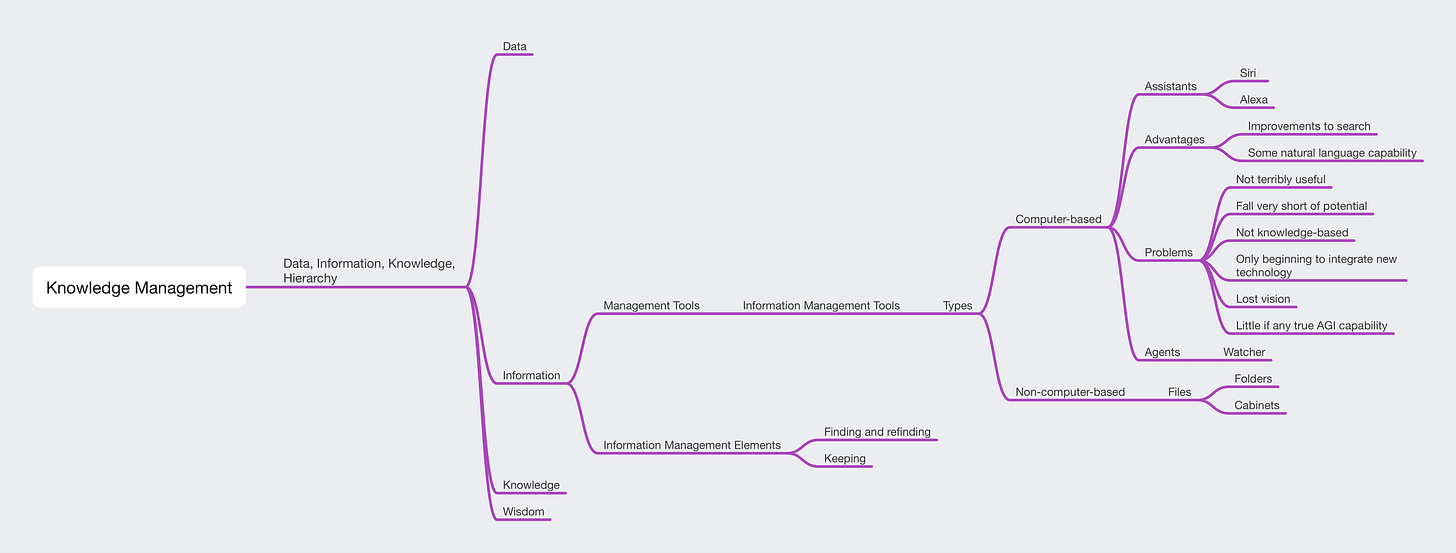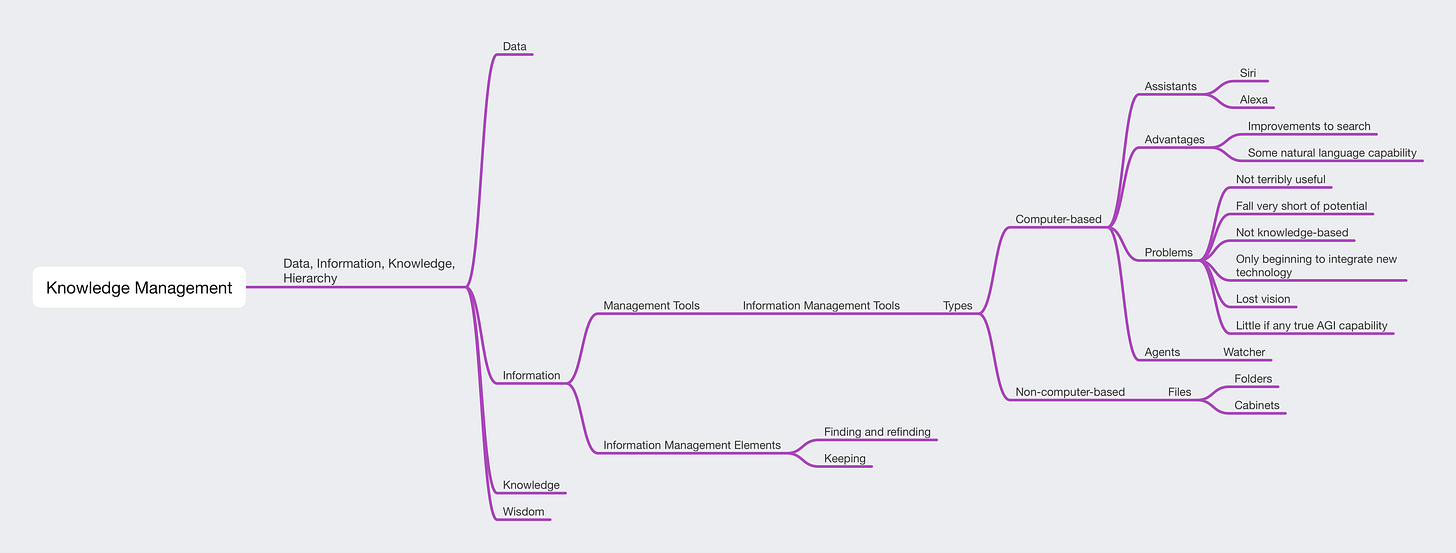A short while ago, I wrote about pearls. Here’s a link to that article (https://thisreallybothersme.substack.com/p/do-you-collect-pearls). Like an embryo, this idea, which has been present in my thinking and life for quite a long time, has become center stage. Read the article here on Substack if you haven’t seen it. It might also help your writing process.
Recently, I became interested again in the idea of personal knowledge management (PKM). The idea was popular in the 90s but, like most good ideas that are looked down upon by the venturists, interest in KM ideas waned. I wrote an article describing what KM (knowledge management) is, and of course, you can find a definition and examples on Wikipedia (https://en.wikipedia.org/wiki/Knowledge_management). I was happy to see though that its ideas were still well and has a life in an umbrella field called personal information management or PIM (https://en.wikipedia.org/wiki/Personal_information_management).
My interest in PIM came as a result of wondering if anything had been done in KM or PKM since I wrote about this area of interest of mine. This curiosity led me to an article on Wikipedia about the state of PIM. This article is one of the finds on Wikipedia wrote by a very knowledgeable person and full of resources, ideas, current states, etc. The article has over 120 references dating as recently as 2020. It is a treasure chest of pearls.
Which brings me back to the idea of Pearls because this clearly created an idea flow for me. An idea flow is nothing more than a related collection of pearls. Here is a mind map depicting that chain. (I really like visual representations).
The mind map is one way to document and represent a conceptualization of concepts to gain an understanding of what the concepts might be and how they relate to one another. It is not a permanent representation and depends on flexibility to evolve with the needs of its application.
This particular mind map documents some issues inherent with personal information management and the technology envisioned to support the effort to manage information.
The fundamental issue to be solved in that we do not have a way to understand human reasoning with an efficient computational approach. This has been a problem that has been explored in AI since the very beginning of AI. Many of AIs renowned scientists have worked on the problem of understanding and knowledge representation. The heritage of their work and the people who carried it out is humbling. One of the reasons that LLM-based computing is so infuriating is that it has left an important and venerable history behind.
Although sometimes science requires a break in direction to result in a breakthrough, it requires knowledge of its history to make appropriate decisions about a break in direction. Unfortunately, the scientists doing this new AI today have little or no perspective and have taken a very risky approach.
When the present approach fails, the people paying for these efforts will become dissatisfied and impatient, not to mention finally becoming aware of the fruitlessness of the approach. It is ashame because of the tremendous waste of resources. They are using a past approach over 60 years old, but (and this is an extremely critical but) it was rejected twice before in the past because it never ever lived up to its expectations.
The reason I raise these concerns is that the very problems that are identified in my mind map have been ignored. The assistants we have today need to have intelligence, and they do not. If no one is actually working on these problems, they will never have a solution. Let me give you a simple example from a recent interaction I had with the Alexa assistant.
It is clear that although Alexa “appears” to be proficient in its use of English, it is far from proficient. Largely this proficient is not based on understanding but simple algorithmic approaches that do not depend on understanding.
Alexa can present the current weather forecast. Usually, a message notice appears on my Alexa device. The weather report would usually begin, “Good Evening, Mr. Koaplon …” My last name is pronounced Kaaplaan. The double a’s are meant to represent the aah sound (long a). Alexa has never pronounced my last name correctly. This mispronunciation has continued for quite a few years.
Thinking that Alexa has some intelligence, I decided to ask it to correct its pronunciation of my last name. This request was the beginning and end of my request to correct the pronunciation of my name. It was clear that Alexa had no programming to deal with this request. If Alexa were truly intelligent, it would need no specialized programming to correct this error. It is clear that there was nothing in the programming or data employed therein to handle any kind of request for correction.
Amazon is looking to integrate current approaches to AI into their systems. Without understanding and reasoning, the results will continue to be disappointing and also a tremendous waste of resources.
This article comes from several pearls emerging and coalescing into what this article is about.
Closing Comments
I hope you enjoyed reading this article. I enjoyed writing it. If you did like it, please leave a comment. If you can clap for it, please do so. Even better, please subscribe to this newsletter. I am now publishing on Vocal and Substack. I am in the process of moving all of my articles to these platforms. If you have friends, please pass this article on to them. Have a great day, and thanks again for reading.
You can reach me at You can reach me at therenguy@gmail.com.
More From Me
On-Off Switch
Is the the AI We Want
Church of Ai





